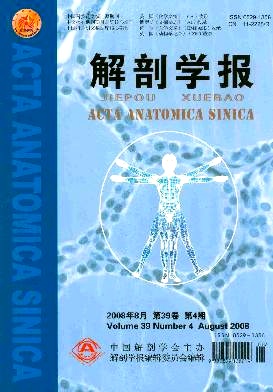|
|
Influence of the ambient calcium level on stanniocalcin-1 gene expression and plasma membrane Ca2+-ATPase activity in kidney of EM>Bufo bufo gargarizans/EM>
2012, 43 (5):
685-689.
doi: 10.3969/j.issn.0529-1356.2012.05.019
Objective To investigate the influence of the plasma calcium level on stanniocalcin-1 (STC1) gene expression and on plasma membrane Ca2+-ATPase (PMCA) activity in kidney. Methods Seventy-two adult toads, EM>Bufo bufo gargarizans/EM> , were randomly divided into 3 groups, which were exposed to the tap water only, the tap water with 0.1mol/L CaCl2, and the tap water with 0.03mol/L ethylene diamine tetraacetic acid(EDTA), respectively. The toad’s plasma was prepared. Kidneys were excised at pre-exposure and post-exposure 12, 24, 48, 72, 96, 120, and 144 hours, respectively. Both of plasma Ca2+ level and PMCA activity in kidney were detected with colorimetry. STC1 gene expression in kidney were analyzed with semi-quantitative RT-PCR. STC1 immunohistochemical staining were showed by using rabbit antibody for mouse STC1 in conjunction with streptavidin/HRP-conjugated second antibodies. Results Compared with the un-treated group, 0.1mol/L CaCl2 exposure induced the plasma calcium level to increase at the 12th and 24th hour, and to restore to the normal level at the 48th hour, and to increase after 72 hours. Furthermore, 0.1mol/L CaCl2 exposure enhanced PMCA activity, and up-regulated STC1 gene expression during 12-24 hours, and restored them to the normal level at the 72th hour. Compared with un-treated group, the plasma calcium level decreased, but both of PMCA activity and STC1 gene expression did not change after 0.03mol/L EDTA exposure. The immunohistochemistry staining showed that STC1 immunoreactive cells were found in distal convoluted tubules, and in medullary collecting ducts. Moreover, 0.1mol/L CaCl2 exposur enhanced STC1 immunoreactivity. Conclusion High plasma calcium level stimulates PMCA activity and up-regulation of STC1 gene expression in kidney. The up-regulation of STC1 decreases the plasma calcium level. However, substained high plasma calcium level results in inhibition of PMCA activity and down-regulation of
Related Articles |
Metrics
|


